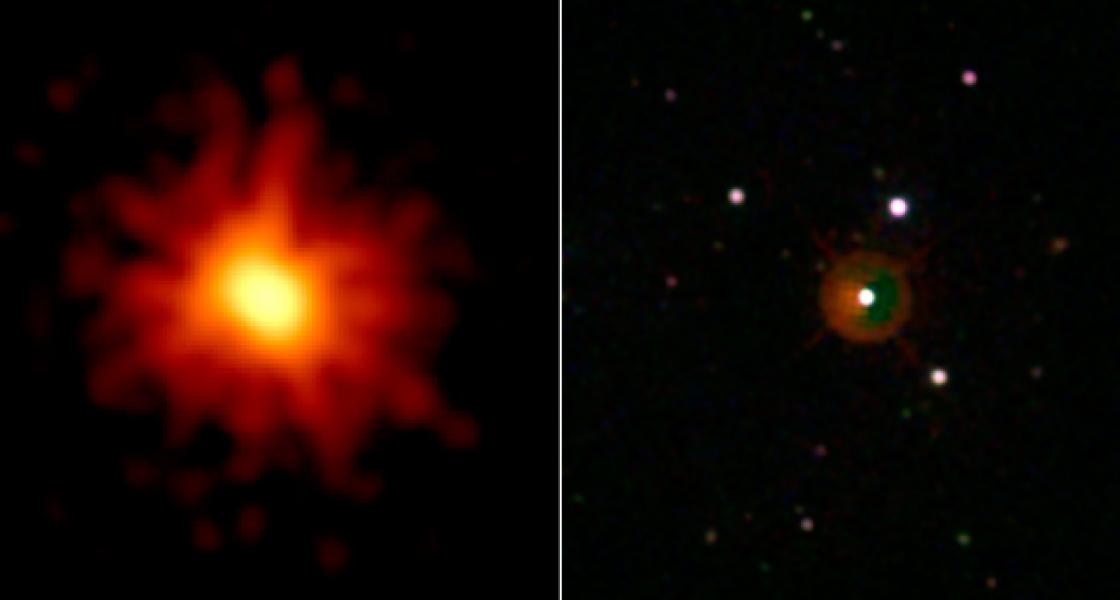Until recently, astronomers have had difficulty figuring out the composition and size of dust grains in galaxies beyond the Milky Way. They've had some luck with the Large and Small Magellanic Clouds (LMC and SMC, respectively). However, these two "satellite" galaxies are practically our next-door neighbors and much easier to observe.
Now, however, information about dust in other galaxies can be extracted from the afterglow spectra of gamma-ray bursts, according to new research by Fellow Rosalba Perna, former graduate student Kevin Heng (now at Princeton), former senior research associate Davide Lazzati, and their colleagues from Notre Dame, Caltech, Liverpool John Moores University, the National Optical Astronomy Observatory, and the Harvard Smithsonian Center for Astrophysics. The new research was made possible by infrared data gathered by the Spitzer Space Telescope. The researchers also made use of published information about observations of gamma-ray-burst afterglows in the visible, near ultraviolet, and soft X-ray regions of the electromagnetic spectrum.
Perna and her colleagues analyzed the broadband spectrum of a gamma-ray burst’s afterglow during a type 1c supernova in a galaxy about two billion light years from Earth. Then they used spectra in the infrared, visible, ultraviolet, and X-ray regions to reconstruct the dust composition in the host galaxy. They found that the host galaxy not only had a very different dust profile than the Milky Way, but also that its dust profile was comparable to that of the LMC, an irregular galaxy located about 160,000 light years from the Milky Way.
Because dust is made in stars, such dust profiles will be important for understanding both the number of stars present in a particular galaxy and the environment in which the stars formed. The researchers want to use their method of analyzing gamma-ray-burst afterglows to study the composition of dust in other far-away galaxies. Their goal is to learn more about how dust and stars evolve in the Universe. - Julie Phillips




